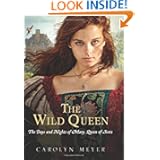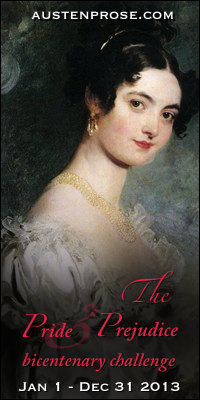Happy Anniversary, Pride and Prejudice!
It is a truth universally acknowledged that January 28, 2013 marks the bicentennial of the publication of one of the most beloved novels in the English language. Join the Pride and Prejudice Anniversary Party blog hop hosted by Alyssa Goodnight and Stiletto Storytime.
Dearest Jane, (May I call you that? It doesn't sound right somehow.)
I read your book for the first time at university, where girls are allowed to attend in my day (but for fun, not for class). I had seen bits of the Colin Firth mini-series version on TV and had recently seen Emma Thompson's adaptation of Sense and Sensibility. (Television and the movies are like the theatre, but an image is recorded and played back). When I first read the book, I got caught up in the story, even thought I knew the outcome. (Thank you Nora Ephron for You’ve Got Mail!) I thought Elizabeth only married Mr. Darcy because he was a nice guy who cared about her but she did not really love him. I worried about her future happiness. The more I read the book, the more I discover and I have revised my opinion to see that Elizabeth truly comes to love Darcy. I became hooked on the beautiful writing style and have been in love ever since! There are so many subtle nuances in the story that the more I read, the more I discover. The book is now one of my favorites. I feel a strong connection to Elizabeth, especially since my father and brother-in-law often sound like Mrs. Bennet! ("Marry for money!")
You, Miss Austen, have become one of my favorite authors. You make me smile and cry and sigh all in one novel. Your themes still stand true even after 200 years. Thank you for sharing your delightful creation with the rest of us.
Yours sincerely,
Queen Pooh Bear
When was the first time you read Pride and Prejudice? What were your impressions? If you haven't read the book, have you read any modern adaptations or seen any of the movies? Share your thoughts in the comments section.






































